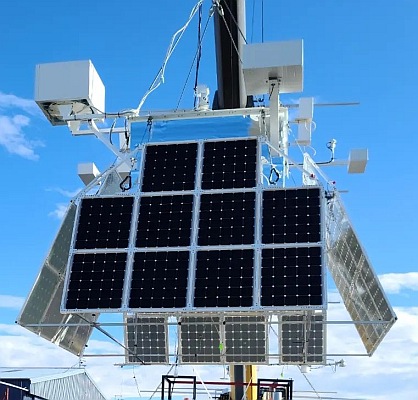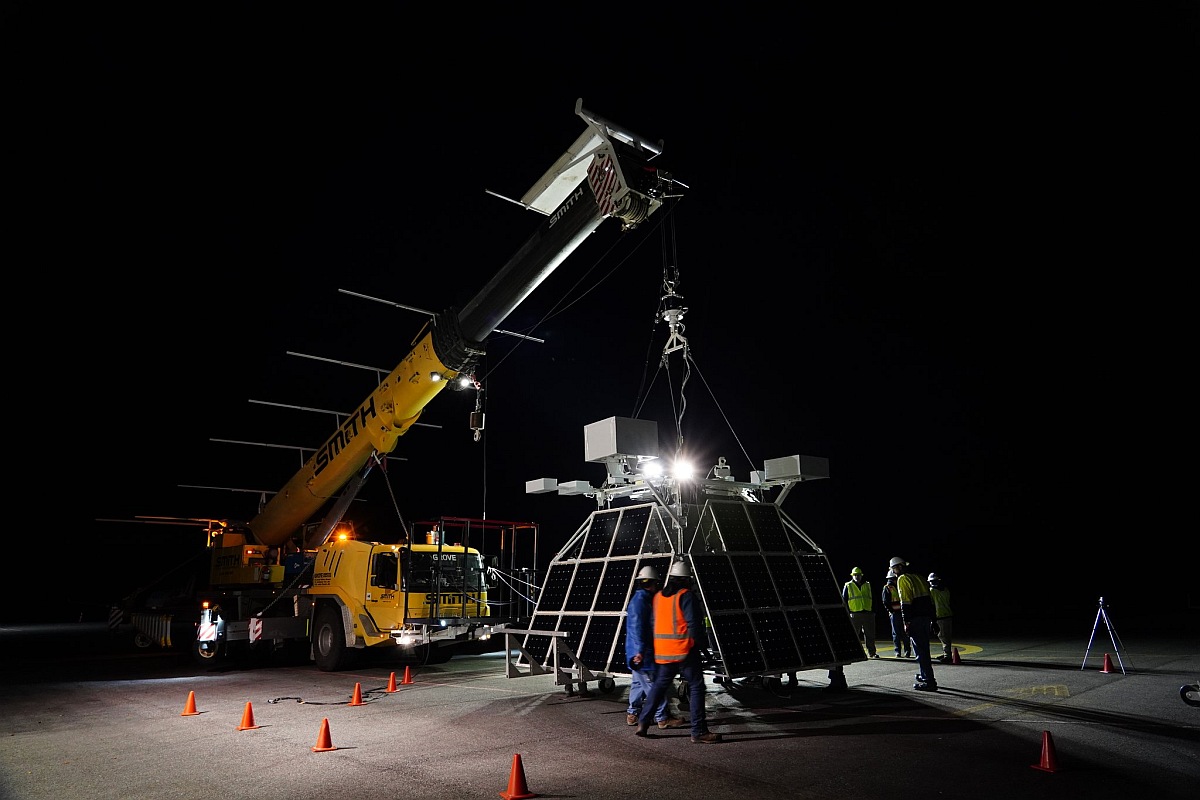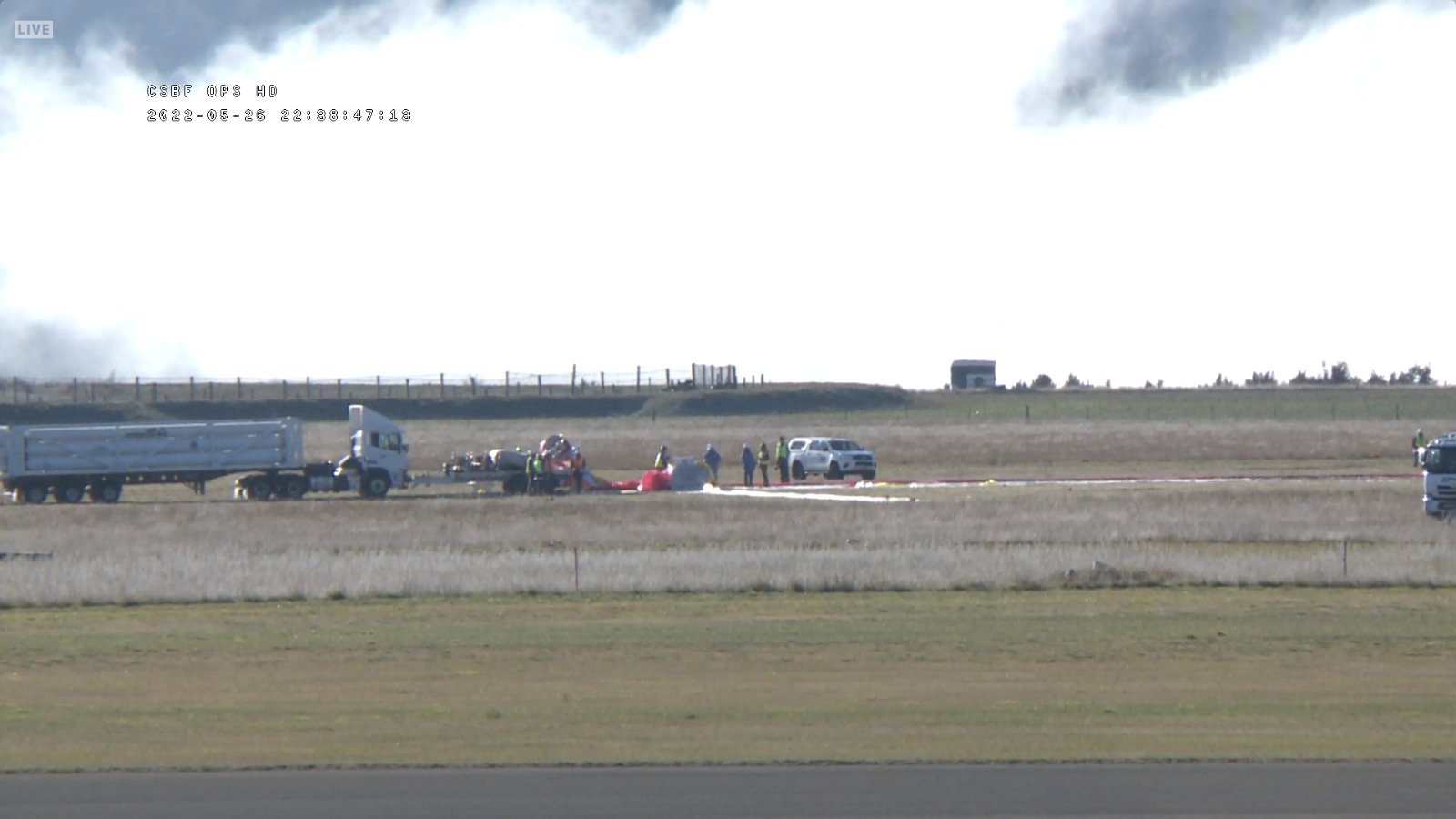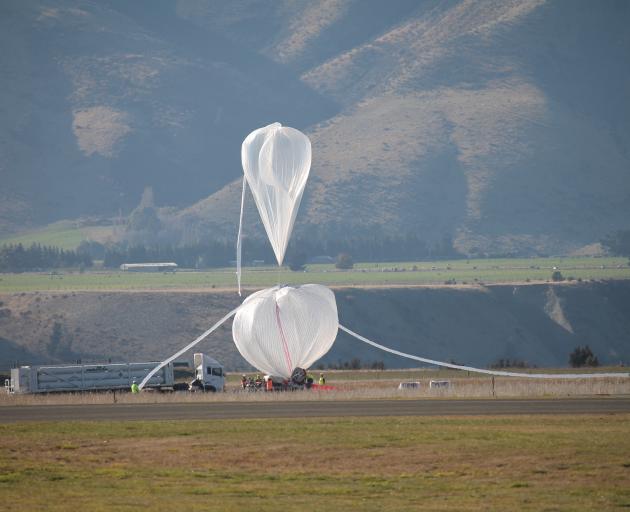Purpose of the flight and payload description
The NASA Super Pressure Balloon (SPB) is a pumpkin-shaped sealed structure that is filled with a measured and specific amount of helium lifting gas which always maintains a positive internal pressure in relationship to the environment it is floating in. The balloon is filled with an amount of helium needed to lift the entire flight system plus some extra gas to provide an upward force known as the free lift. Once launched, the balloon ascends but unlike occurs with conventional or so called Zero-Pressure (ZP) balloons when it reaches the desired float altitude, the extra helium is not vented off, but fills out the shape and pressurizes the balloon. This extra helium is enough to pressurize the balloon and also to over-pressurize the balloon to the design limits.
The design's shape is an oblate spheroid with a proportion of height of about 60% of the diameter. It is an evolution of the former Ultra Long Duration Balloon (ULDB) project initiated by NASA in early 80's and still is in developmental phase. Is made up of many separate panels or gores that run from top to bottom on the balloon. At the edge of each of these gores is a very strong and light weight tendon or rope that runs from top to bottom on the balloon. Each of these gores are shaped that, while under pressure, have a slightly curved lobed shape. This is why this type of balloon has been called a pumpkin shaped Super Pressure Balloon.
Theoretically, the SPB is designed to fly with a positive internal pressure at all times: as the sun heats up the balloon during the day, the internal pressure (differential pressure) increases, and at night when the balloon cools down, the differential pressure significantly decreases, but still above ambient, hence maintaining super pressure condition at all times. The differential pressure range is up to 180 Pa (0.0261 psi). This is a very small internal pressure, but it is enough to keep this balloon flying through the night. As a result of maintaining near constant volume, the SPB offers greater stability at float altitude with minimal altitude excursion during the day/night cycles when compared to that experienced by ZPB balloons. This added stability and extended durations at mid-latitudes will enable new science missions that currently are not feasible with ZP balloons.
This flight, was meant to be the fourth one launched from Wanaka aimed to perform a long duration mission at middle latitudes. It carried no scientific experiments. The payload below the balloon (which can be seen in detail in the image at right) was a specially built square gondola fitted with instruments aimed to control and monitor the behaviour of the balloon in flight. Althought these instruments are similar to the ones used in conventional duration flights, longer flights require systems with higher reliability. It was composed by: flight control and data storage including redundant flight computers for telemetry, ballast, and terminate; communication systems for line of sight as well as long range satellite communications; other flight systems to support unique needs for the SPB flights including differential pressure measurements, environmental measurements, tendon loads and many more parameters; small and light weight camera systems with fixed focal length, pan/tilt/zoom and systems to obtain images from over the horizon; reliable solar power and charging systems.
Details of the balloon flight
Balloon launched on: 5/27/2022
Launch site: Wanaka Airport, Otago, New Zealand
Balloon launched by: Columbia Scientific Balloon Facility (CSBF)
Balloon manufacturer/size/composition: Super Pressure Balloon Raven Aerostar - 18.793.000 cuft
End of flight (L for landing time, W for last contact, otherwise termination time): 5/27/2022
Balloon flight duration (F: time at float only, otherwise total flight time in d:days / h:hours or m:minutes - ): Aborted Flight
Landing site: Aborted flight
The sixth launch attempt was aborted due to a ground support equipment issue. Inflation operations began, but the brakes on a key piece of equipment that guides and feeds the balloon material during launch operations would not release. Soon after the cancellation of the flight NASA announced that will investigate the cause of the ground support equipment issue.
External references
- NASA Aborts Launch, Closes Out 2022 NZ Campaign NASA blog
- Technology of the Super Pressure Balloon NASA's Balloon Program Office website
16036If you consider this website interesting or useful, you can help me to keep it up and running with a small donation to cover the operational costs. Just the equivalent of the price of a cup of coffee helps a lot.





